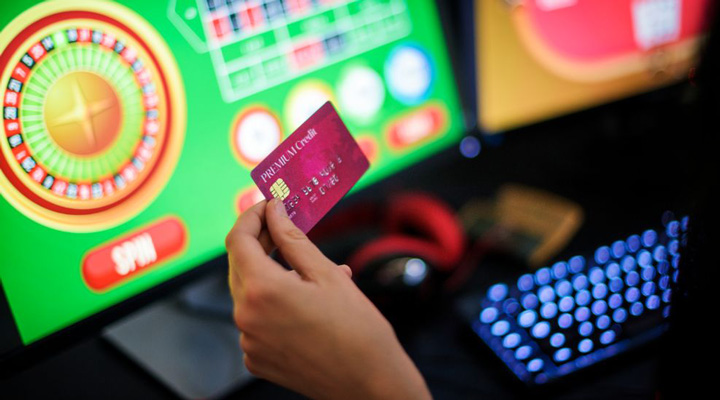The most common methods of slot machine manipulation
For as long as gambling has existed, people have tried to outsmart the system, using various scams. For example, dice, slot machines have been manipulated to show a given number and cards have been marked or “marked” to give the player an advantage.
When commercial gambling was still in its infancy, cheats were quite successful. Ever more tricky methods were used to try to take advantage of the gambling establishments.
In the past, slot machines in particular offered a lot of scope for attack. With relatively simple tricks, fraudsters coaxed money out of the classic slots from Novoline, Merkur & Co. that still functioned purely mechanically at the time.
But in the course of time, the technology developed further and the slot machine manufacturers integrated efficient protective measures to protect against fraud.
However, the skills of the fraudsters also developed further. Resourceful tinkerers sometimes still manage to outsmart the slot machines equipped with protection programmes and bypass their security systems.
Land-based casinos and online casinos generate around 70 billion euros a year worldwide. Compared to the enormous revenues generated by the gambling venues, the losses lost by the gambling companies due to fraud are comparatively small. According to Worldwide Casino Consulting, no more than 0.1 % of the revenues end up in the hands of fraudsters. In most cases, it is possible to track down the fraudsters.
In the following, we present some of the most common methods, some of which have even been used successfully in the past. Nevertheless, we advise against trying the tricks.
Casinos employ staff whose main task is to protect the bank from fraud. It is their job, so to speak, to know about fraud schemes as well as slot machine tips & tricks. If someone is caught cheating, the gambling operators do not treat the person squeamishly.
Coin on a string (yo-yo cheat)
The trick with the coin attached to a string, also known as “yo-yo cheat”, is one of the classic methods of manipulating a slot machine.
The coin is thrown into the slot of the machine. A sensor detects that money has been inserted and the player can start his game rounds. However, he pulls the coin out again beforehand so that he can use it again. This trick no longer works today because the mechanical sensors have been replaced by electronic devices.
False coins
The classic slot machines of the older generation used a system that recorded the weight of the coin. Their value was determined analogously. Some cheats used counterfeit coins of the same weight made of similar metal.
One of the most famous fraudsters who used this trick was Louis “The Coin” Colavecchio, who robbed casinos of a lot of money for years with this scam. He was finally arrested in 1998. After he was released in 2006, he continued his scam. However, he was caught again after a few months.
Polished coins
As slot machine technology advanced, the machines incorporated both an optical sensor and a physical meter. When the coin is inserted, the optical sensor detects the coin. However, this sensor was not connected to the second measuring device.
Fraudsters inserted a plastic coin of the same size together with the coin ground off on one side. Since the sensor could not detect the ground coin, it was ejected again while the plastic chip remained in the machine and triggered the game round.
Coins replaced by player cards.
The scams that used manipulated coins no longer work today. In most gambling halls and casinos, player cards are used instead of cash.
The player card works similarly to mobile phone credit. The credit is topped up at the cash desk or at a special cash machine. The card is then inserted into the designated slot and one plays until the credit is used up. If winnings are achieved, they are credited to the card. The credit can be paid out at the cash desk or at the machine.
Cheating with the magnet
Cheating with a magnet was a method that worked when the reels of slot machines were not yet electronically controlled but rotated mechanically.
The cheater only had to hold a strong magnet in front of the spinning reels at the right moment to generate the desired winning combination. Today, this method is no longer possible.
Slot machine manipulation with the piano string
In 1982, a group devised a plan to manipulate slot machines at Caesars Boardwalk Regency Casino in Atlantic City using a piano string. To do this, the machine was first opened to attach the wire to the mechanism of the reels. During play, the piano string was then pulled to obtain the desired winning combinations.
However, the team was filmed by the surveillance cameras taking a lot of money out of the machine. Before the perpetrators could even leave the casino, they were arrested by the security forces.
Fraud using modern technology
As the technology of the gambling slot machines apps developed and simple tricks like fake coins or the yo-yo trick were no longer applicable, resourceful tinkerers came up with other ideas to outsmart the slot machines.
Slot Cheat Code
In the 1990s, the Nevada Gaming Authority hired Ronald D. Harris. He had the task of examining the software of the slot machines in the casinos in the state for possible errors. His position enabled Harris to know the RNG source codes. This meant that it was no longer a problem for him to manipulate the codes to his advantage.
Together with his accomplice Reid McNeal, they planned to extract only a few thousand dollars from the slot machines every night so as not to attract attention. But one day they were too greedy. A $150,000 win at Bally’s Park Place Hotel in Atlantic City attracted the attention of management, leading to a search of Harris’ room. There, police investigators found the equipment.
